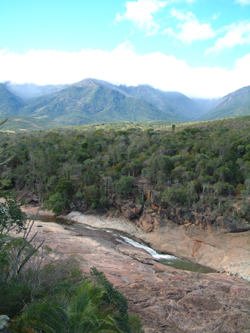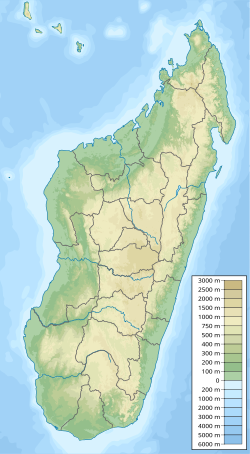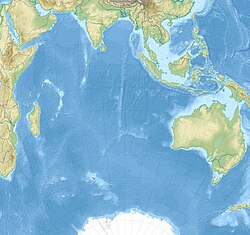| UNESCO World Heritage Site | |
|---|---|
 | |
| Location | Madagascar |
| Criteria | Natural: (ix), (x) |
| Reference | 1257 |
| Inscription | 2007 (31st Session) |
| Endangered | 2010–... |
| Area | 479,660.7 ha (1,185,267 acres) |
| Coordinates | 14°27′35″S 49°42′9″E / 14.45972°S 49.70250°E |
The Rainforests of the Atsinanana is a World Heritage Site that was inscribed in 2007 and consists of 13 specific areas in six national parks in the eastern part of Madagascar:
- Marojejy National Park
- Masoala National Park
- Zahamena National Park
- Ranomafana National Park
- Andringitra National Park
- Andohahela National Park
The Rainforests of the Atsinanana are distributed along the eastern part of the island. These relict forests are critically important for maintaining ongoing ecological processes necessary for the survival of Madagascar’s unique biodiversity, which reflects the island’s geological history. Having completed its separation from all other land masses more than 60 million years ago, Madagascar’s plant and animal life evolved in isolation. The rainforests are inscribed for their importance to both ecological and biological processes as well as their biodiversity and the threatened species they support. Many species are rare and threatened especially lemurs and other primates.

See also[edit]
References[edit]
External links[edit]
- UNESCO description of the parks.
- Rainforests of the Atsinanana – World Heritage Site
- "Africa, Rainforests of the Atsinanana, Madagascar" [1]. UNESCO Organization.



Well, that’s interesting to know that Psilotum nudum are known as whisk ferns. Psilotum nudum is the commoner species of the two. While the P. flaccidum is a rare species and is found in the tropical islands. Both the species are usually epiphytic in habit and grow upon tree ferns. These species may also be terrestrial and grow in humus or in the crevices of the rocks.
View the detailed Guide of Psilotum nudum: Detailed Study Of Psilotum Nudum (Whisk Fern), Classification, Anatomy, Reproduction